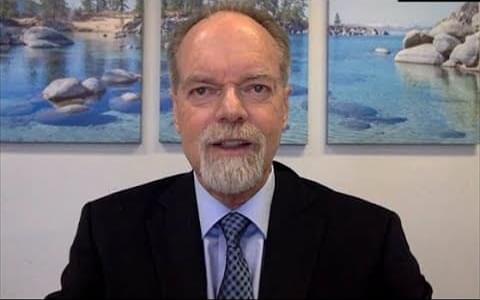Mar 3, 2022
When the Dark Web meets the Metaverse
Posted by Len Rosen in categories: energy, futurism
Thomas Frey, Futurist, writes about the Dark Web and Metaverse.
Many people will push the boundaries in the Metaverse and anonymity fuels it.
Thomas Frey, Futurist, writes about the Dark Web and Metaverse.
Many people will push the boundaries in the Metaverse and anonymity fuels it.
While watching a fearful memory take shape in the brain of a living fish, neuroscientists see an unexpected level of rewiring occur in the synaptic connections.

In this video Bill Andrews summarizes in 19 minutes his extensive research on telomeres, aging, and his proposal to cure aging. Bill Andrews is an American molecular biologist and gerontologist, founder and CEO of the biotech company Sierra Sciences.
Bill Andrews summarizes in 19 minutes his extensive and prolific research on telomeres, aging, and the cure for aging.
Russia’s attacks on Ukraine continue to take lives and destroy infrastructure as the country invades. This infrastructure damage has disrupted internet access in Ukraine, leading a government official to publicly request Starlink satellite internet access for the country from SpaceX CEO Elon Musk. Musk obliged, activating Starlink service in Ukraine and sending additional hardware. But with continued attacks on infrastructure, how will Ukraine stay connected?
Fedorov brings up an important point: Even though Starlink operates without the need for traditional internet infrastructure, the Earth-bound hardware still needs power. And, as Russian attacks bombard the country, Ukraine’s internet access will continue to be threatened.
Fedorov’s statement publicly reached out for help acquiring generators to keep Starlink online for Ukrainians. But Musk responded with an alternative suggestion.
Continue reading “How will Ukraine keep SpaceX’s Starlink internet service online?” »
A mini brain with trillions of petaflops in your pant pocket? Sounds Good!
“This is what we’re announcing today,” said Knowles. “A machine that in fact will exceed the parametric capacity of the human brain.”
That next-gen IPU, he said, would realize the vision of 1960s compute scientist Jack Good, a colleague of Alan Turing’s who conceived of an “intelligence explosion.”
According to data from Nansen, 2.8 million unique addresses hold 11.1 million Axies, alongside 97% of users having a minimum of three Axie nonfungible tokens.
It’s easy to see why: as shockingly powerful mini-processors, neurons and their connections—together dubbed the connectome—hold the secret to highly efficient and flexible computation. Nestled inside the brain’s wiring diagrams are the keys to consciousness, memories, and emotion. To connectomics, mapping the brain isn’t just an academic exercise to better understand ourselves—it could lead to more efficient AI that thinks like us.
But often ignored are the brain’s supporting characters: astrocytes—brain cells shaped like stars—and microglia, specialized immune cells. Previously considered “wallflowers,” these cells nurture neurons and fine-tune their connections, ultimately shaping the connectome. Without this long-forgotten half, the brain wouldn’t be the computing wizard we strive to imitate with machines.
In a stunning new brain map published in Cell, these cells are finally having their time in the spotlight. Led by Dr. H. Sebastian Seung at Princeton University, the original prophet of the connectome, the map captures a tiny chunk of the mouse’s visual cortex, less than 1,000 times smaller than a pea. Yet jam-packed inside the map aren’t just neurons; in a technical tour de force, the team mapped all brain cells, their connections, blood vessels, and even the compartments inside cells that house DNA and produce energy.
Ford this morning said it’s separating its electric vehicle and internal combustion businesses into separate units. Why it matters: The creation of distinct business lines — called “Model e” and “Ford Blue” — underscores how auto giants are reorienting around EV development. Get market news worthy of your time with Axios Markets. Subscribe for free. How it works: Ford said the two units would be “strategically interdependent” and share relevant tech. Together with the Ford Pro commercial services line launched last year, Ford said the three units will begin to separately report profits and losses in 2023.
Earth´s Moon may have been habitable and hosted life billions of years ago: a hypothesis re-evaluated.
An Outrageous Hypothesis Re-Evaluated.
It should come as little surprise that pioneering work in biological robotics is as controversial as it is exciting. Take for example the article published in December 2021 in the Proceedings of the National Academy of Sciences by Sam Kreigman and Douglas Blackiston at Tufts University and colleagues. This article, entitled “Kinematic self-replication in reconfigurable organisms,” is the third installment of the authors’ “xenobots” series.
